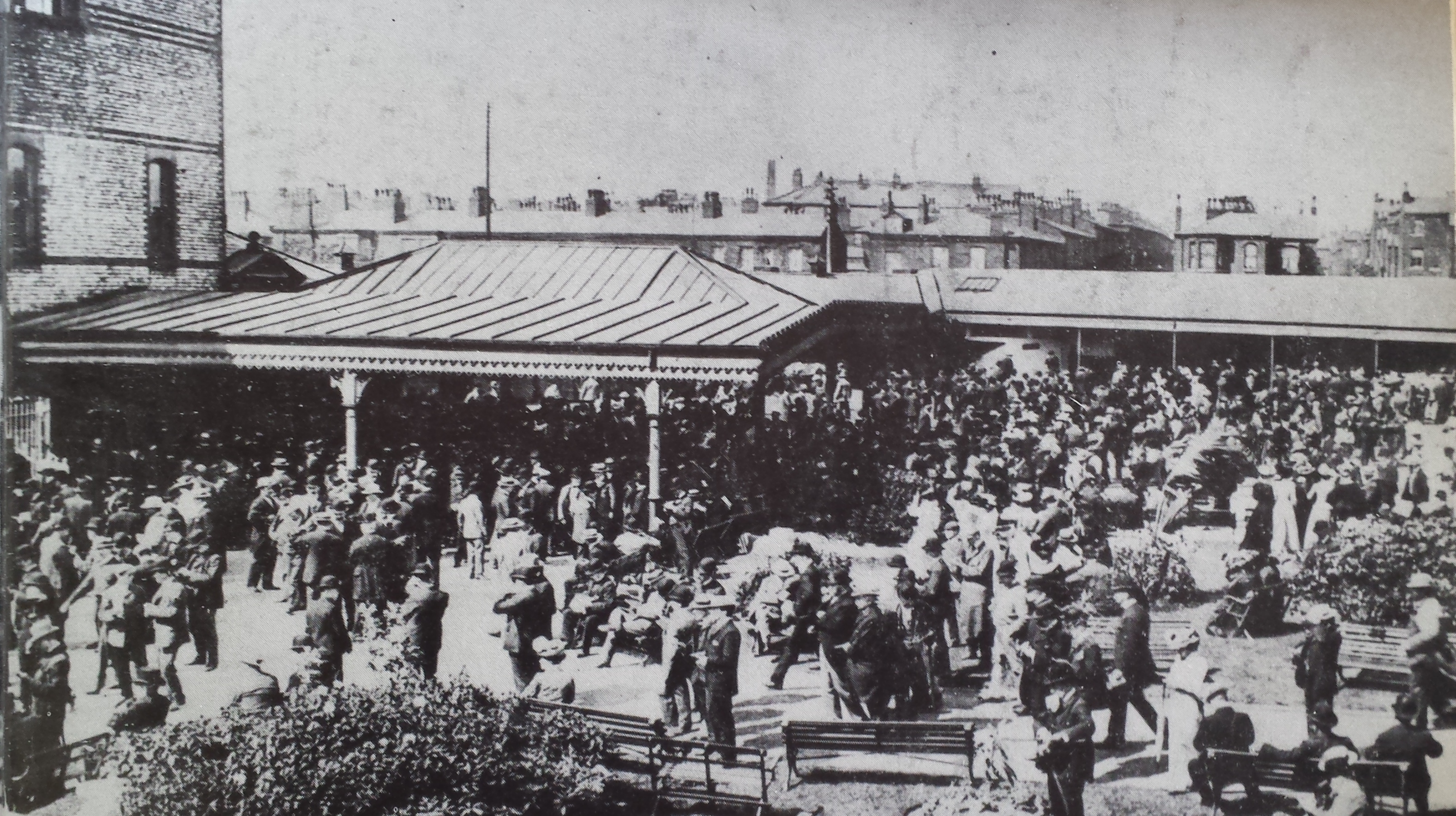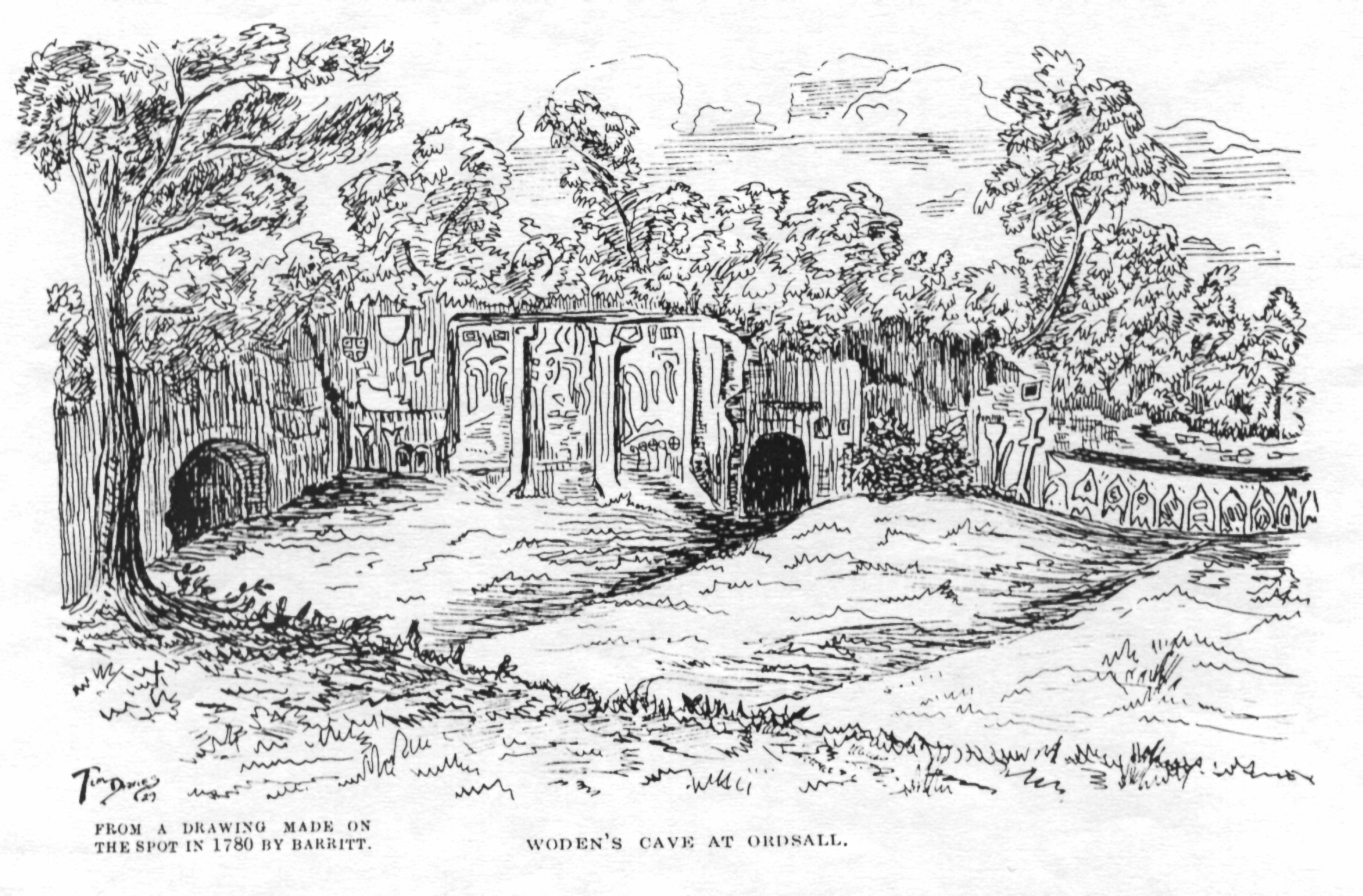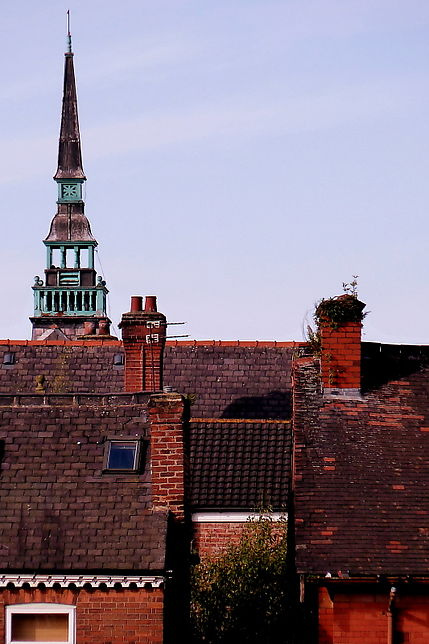|
Salford Red Devils
The Salford Red Devils are a professional rugby league club in Salford, Greater Manchester, England, who play in the Super League. Formed in 1873, they have won six Championships and one Challenge Cup. Their home ground since 2012 has been the AJ Bell Stadium in Barton-upon-Irwell, before which they played at the Willows in Weaste. Before 1995, the club was known simply as Salford, from 1995 to 1998 Salford Reds and from 1999 to 2013 Salford City Reds. History Early years The club was founded in 1873 by the boys of the Cavendish Street Chapel in Hulme, Manchester. Using a local field, the boys organised matches amongst themselves before moving to nearby Moss Side. In an attempt to recruit new members, the link with the school was broken in 1875 and the name ''Cavendish Football Club'' was adopted. They moved to a new base on the Salford side of the River Irwell at Throstle Nest Weir in Ordsall. Two seasons later, they moved again to the west side of Trafford Road to a g ... [...More Info...] [...Related Items...] OR: [Wikipedia] [Google] [Baidu] |
Salford Red Devils Logo
Salford () is a city and the largest settlement in the City of Salford metropolitan borough in Greater Manchester, England. In 2011, Salford had a population of 103,886. It is also the second and only other city in the metropolitan county after neighbouring Manchester. Salford is located in a meander of the River Irwell which forms part of its boundary with Manchester. The former County Borough of Salford, which also included Broughton, Pendleton and Kersal, was granted city status in 1926. In 1974 the wider Metropolitan Borough of the City of Salford was established with responsibility for a significantly larger region. Historically in Lancashire, Salford was the judicial seat of the ancient hundred of Salfordshire. It was granted a charter by Ranulf de Blondeville, 6th Earl of Chester, in about 1230, making Salford a free borough of greater cultural and commercial importance than its neighbour Manchester.. The Industrial Revolution of the late 18th and early 19th ce ... [...More Info...] [...Related Items...] OR: [Wikipedia] [Google] [Baidu] |
Maurice Richards
Maurice Charles Rees Richards (born 2 February 1945) is a Welsh former dual-code international rugby footballer. A wing, he was part of the 1968 British Lions tour to South Africa. His grandfather had been a professional footballer with Charlton Athletic and Bradford City in the 1920s. Richards played rugby union at club level for Cardiff, and the Wales national rugby union team before switching to rugby league in 1969 with Salford. Playing career International honours Maurice Richards won caps for Wales (RL) while at Salford 1969...1975 3-caps (World Cup in 1975 1-cap), and won caps for Great Britain (RL) while at Salford in 1974 against Australia, and New Zealand. County Cup Final appearances Maurice Richards played , i.e. number 5, and scored a try in Salford's 25–11 victory over Swinton in the 1972 Lancashire County Cup Final during the 1972–73 season at Wilderspool Stadium, Warrington on Saturday 21 October 1972, played in the 2–6 defeat by Widnes in the 1974 L ... [...More Info...] [...Related Items...] OR: [Wikipedia] [Google] [Baidu] |
Manchester Racecourse
Manchester Racecourse was a venue for horse racing located at a number of sites around the Manchester area including; Kersal Moor, New Barnes, Weaste and Castle Irwell, Pendleton, then in Lancashire. The final home of the course, Castle Irwell, was closed in 1963. Despite its name, the course was never actually located within the boundaries of the ancient township of Manchester or the subsequent city of Manchester. Location and history The earliest known horse races in the Manchester area were run at Barlow Moor, first recorded in 1647, and again from 1697 to 1701 and the earliest record of horse-racing on Kersal Moor is from a notice in the '' London Gazette'' of 2–5 May 1687.Farrer, William and Brownbill, J. (editors) (1911). 'Townships: Broughton', ''A History of the County of Lancaster'': Volume 4, pp. 217–222. URL: http://www.british-history.ac.uk/report.aspx?compid=41408. Date accessed: 20 February 2008 There were a number of other short-lived courses or on ... [...More Info...] [...Related Items...] OR: [Wikipedia] [Google] [Baidu] |
Ordsall, Greater Manchester
Ordsall is an inner city suburb of Salford, Greater Manchester, England. The population at the 2011 census was 14,194. It lies chiefly to the south of the A57 road, close to the River Irwell, the main boundary with the city of Manchester, Salford Quays and Manchester Ship Canal, which divides it from Stretford. Historically part of Lancashire, Ordsall was the birthplace of the bush roller chain and is home to Ordsall Hall. History The name Ordsall has Old English origins being the personal name ''Ord'' and the word ''halh'', meaning a corner or nook, which has become the modern dialect word "haugh". This, indeed, describes the position of the manor of Ordsall, for its boundary on the south side is a large bend in the River Irwell, which became the site of the docks for the Manchester Ship Canal. Ordsall first appears in records in 1177 when Ordeshala paid two marks towards an aid, a feudal due or tax. Antiquarian and Geologist, Samuel Hibbert-Ware gave a different etymolog ... [...More Info...] [...Related Items...] OR: [Wikipedia] [Google] [Baidu] |
River Irwell
The River Irwell ( ) is a tributary of the River Mersey in north west England. It rises at Irwell Springs on Deerplay Moor, approximately north of Bacup and flows southwards for to meet the Mersey near Irlam. The Irwell marks the boundary between Manchester and Salford, and its lower reaches have been canalised and now form part of the Manchester Ship Canal. In the 17th and 18th centuries, the Irwell's lower reaches were a trading route that became part of the Mersey and Irwell Navigation. In the 19th century, the river's course downstream of Manchester was permanently altered by the construction of the Manchester Ship Canal which opened in 1896. The canal turned Manchester and Salford into a major inland seaport and led to the development of Trafford Park which became the largest industrial estate in Europe. Further changes were made in the 20th and 21st centuries to prevent flooding in Manchester and Salford, including the construction of the Anaconda Cut in 1970 and the Ri ... [...More Info...] [...Related Items...] OR: [Wikipedia] [Google] [Baidu] |
Moss Side
Moss Side is an Inner city, inner-city area of Manchester, England, south of the Manchester city centre, city centre, It had a population of 20,745 at the United Kingdom Census 2021, 2021 census. Moss Side is bounded by Hulme to the north, Chorlton-on-Medlock, Rusholme and Fallowfield to the east, Whalley Range, Manchester, Whalley Range to the south, and Old Trafford (area), Old Trafford to the west. As well as Whitworth Park and Alexandra Park, Manchester, Alexandra Park, Moss Side is close to Manchester University, Manchester and Manchester Metropolitan University, Manchester Metropolitan universities."Moss Side and Rusholme District Centre Local Plan". Manchester City Council. 2007. p. 52. Manchester City F.C., Manchester City played at Maine Road in Moss Side between 1923 and 2003. History Historic counties of England, Historically part of Lancashire, Moss Side was a rural Township (England), township and chapelry within the Manchester (ancient parish), parish of Manche ... [...More Info...] [...Related Items...] OR: [Wikipedia] [Google] [Baidu] |
Hulme
Hulme () is an inner city area and Ward (politics), electoral ward of Manchester, England, immediately south of Manchester city centre. It has a significant industrial heritage. Historic counties of England, Historically in Lancashire, the name Hulme is derived from the Old Norse word for a small island, or land surrounded by water or marsh, indicating that it may have been first settled by Norsemen, Norse invaders in the period of the Danelaw. History Toponymy Hulme derives its name from the Old Norse language, Old Norse ''holmr, holmi'', through History of Danish, Old Danish ''hulm'' or ''hulme'' meaning small islands or land surrounded by streams, fen or marsh.Eilert Ekwall, Ekwall, Eilert ''The Place-Names of Lancashire'' (1922, The University Press, Lime Grove, Manchester) The area may have fitted this description at the time of the Scandinavian invasion and settlement as it is surrounded by water on three sides by the rivers River Irwell, Irwell, River Medlock, Medlock ... [...More Info...] [...Related Items...] OR: [Wikipedia] [Google] [Baidu] |
Weaste
Weaste () is a suburb in the City of Salford, Greater Manchester, England. In 2014, Weaste and Seedley ward had a population of 12,616. History Historically in Lancashire, it is an industrial area, with many industrial estates. The A57 (Eccles New Road) passes through Weaste, which lies close to the M602 motorway. Weaste is north of Salford Quays. The name is from Old French ''waste'' meaning "common land, waste". Textiles and the Industrial Revolution 19th century cotton firm Ermen & Engels—part-owned by the father of Friedrich Engels—established its second factory in 1837 near Weaste Station, on the Liverpool and Manchester Railway line. Friedrich worked for the factory in its offices near the Royal Exchange in Manchester. Governance The electoral ward of Weaste and Seedley is represented in Westminster by Rebecca Long-Bailey, MP for Salford and Eccles. The ward is represented on Salford City Council by three Labour councillors: Philip Cusack, Alexis Shama, ... [...More Info...] [...Related Items...] OR: [Wikipedia] [Google] [Baidu] |
The Willows, Salford
The Willows was a rugby league stadium in Weaste, Salford, England. It had a final capacity of 11,363 with 2,500 seats. History In 1900, Salford agreed a 14-year lease on of land belonging to the Willows Estate Company, named after the abundance of willow trees in the area. They made their debut at the Willows on 21 December 1901, beating Swinton 2–0 in front of 16,981 fans. In the 1960s, the terrace was flattened at the Willows Road end to make way for the Salford Football and Social Club which was officially opened on 16 June 1966. The Willows switched on its floodlights for the first time in the match with Widnes on Friday 11 March 1966. On 26 November 1989, Salford unveiled a new £50,000 electronic scoreboard above the Willows Variety Centre. Salford City Reds moved to the Salford City Stadium in Barton-upon-Irwell at the start of the 2012 season. The last match at the Willows saw them lose to the Catalans Dragons 18–44 in front of 10,146 fans, a record for a Salfo ... [...More Info...] [...Related Items...] OR: [Wikipedia] [Google] [Baidu] |
Barton-upon-Irwell
Barton upon Irwell (also known as Barton-on-Irwell or Barton) is a suburb of the City of Salford, Greater Manchester, England, with a population of 12,462 in 2014. History Barton Old Hall, a brick-built house degraded to a farmhouse, was the seat of the Barton, Booth and Leigh families. The church of St Catherine, built in stone with an octagonal spire rising to , was consecrated in 1843. The church was demolished in the 1970s due to dry rot and the parish was merged with the neighbouring church of St Michael & All Angels, Peel Green. Governance Within the boundaries of the historic county of Lancashire, Barton-upon-Irwell was a township in the ecclesiastical parish of Eccles in the hundred of Salford. Barton was joined with the municipal borough of Eccles in 1933 which was at the time part of the Lancashire administrative county. Eccles joined the City of Salford, Greater Manchester in 1974. Barton upon Irwell is currently represented in Westminster by Barbara Keeley MP fo ... [...More Info...] [...Related Items...] OR: [Wikipedia] [Google] [Baidu] |
Greater Manchester
Greater Manchester is a metropolitan county and combined authority, combined authority area in North West England, with a population of 2.8 million; comprising ten metropolitan boroughs: City of Manchester, Manchester, City of Salford, Salford, Metropolitan Borough of Bolton, Bolton, Metropolitan Borough of Bury, Bury, Metropolitan Borough of Oldham, Oldham, Metropolitan Borough of Rochdale, Rochdale, Metropolitan Borough of Stockport, Stockport, Tameside, Trafford and Metropolitan Borough of Wigan, Wigan. The county was created on 1 April 1974, as a result of the Local Government Act 1972, and designated a functional Manchester City Region, city region on 1 April 2011. Greater Manchester is formed of parts of the Historic counties of England, historic counties of Cheshire, Lancashire and the West Riding of Yorkshire. Greater Manchester spans , which roughly covers the territory of the Greater Manchester Built-up Area, the List of urban areas in the United Kingdom, second most ... [...More Info...] [...Related Items...] OR: [Wikipedia] [Google] [Baidu] |








.png)